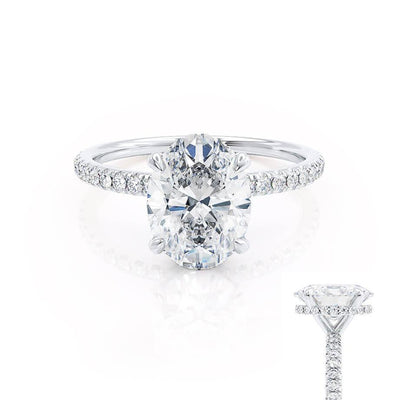In the world of fashion, trends are often cyclical, with styles from decades past making a resurgence every few years. One trend that has been steadily gaining momentum in recent years is the comeback of vintage and antique jewelry. What was once considered a niche market, appreciated only by collectors or history enthusiasts, is now at the forefront of fashion, as more and more people are gravitating towards pieces that offer a unique combination of beauty, craftsmanship, and a story to tell. This revival is a fascinating journey, as people continue to fall in love with jewelry that is not only stylish but also rich in history and sentiment.
The Allure of Vintage and Antique Jewelry
Vintage and antique jewelry such as rings by Lily Arkwright stand apart from mass-produced modern pieces for several reasons. The first is their rarity. Unlike contemporary jewelry, which is often made in large quantities, antique and vintage pieces were typically created in smaller, more limited batches. This means that owning a vintage or antique piece often feels more personal and special, knowing that you are wearing something that may have been crafted decades or even centuries ago.
Moreover, vintage and antique jewelry pieces are often more intricately designed than modern jewelry. The level of craftsmanship seen in pieces from the Victorian, Edwardian, Art Deco, and Art Nouveau eras, for instance, is unparalleled. The attention to detail, the use of high-quality materials, and the unique settings and shapes that define these pieces add to their allure. Many modern jewelry designs are mass-produced, often sacrificing intricate design for simplicity and cost efficiency. In contrast, vintage jewelry is cherished for its uniqueness and the history it represents.
The Appeal to Younger Generations
In the past, antique and vintage jewelry was often seen as the domain of older generations. However, over the past few years, younger consumers—millennials and Gen Z—have been rediscovering the charm of these timeless treasures. This shift in interest is not only because of the aesthetics but also due to a growing desire for sustainability and individuality.
As more people become conscious of the environmental impact of fast fashion, the allure of sustainable shopping has grown. Vintage and antique jewelry represent an eco-friendly alternative to mass-produced pieces, as they reduce the demand for new resources. By choosing vintage, shoppers are also helping to preserve the cultural and artistic heritage encapsulated in these pieces, rather than contributing to the disposable nature of modern consumerism.
Additionally, vintage jewelry offers a sense of individuality that contemporary mass-market jewelry simply cannot. As people move away from uniformity and strive to express their unique personalities, wearing jewelry that is one-of-a-kind has become a way to stand out. Vintage and antique pieces provide that opportunity, offering bold, distinct designs that can’t be replicated by mainstream brands. Whether it’s a pair of vintage Art Deco earrings or an Edwardian diamond ring, these pieces are often conversation starters, carrying stories from a bygone era.
The Rise of Antique Jewelry in Weddings and Special Occasions
Another major factor driving the resurgence of vintage and antique jewelry is its growing popularity in weddings and special occasions. In an era where customization and personalization are highly valued, many couples are opting for vintage engagement rings and wedding bands. These pieces not only offer a beautiful alternative to contemporary designs but also carry significant sentimental value. Vintage engagement rings, for example, may have been passed down through generations, making them a meaningful choice for those seeking to honor family traditions and create their own history.
Beyond weddings, vintage jewelry has found a place in red carpet events, fashion shows, and celebrity wardrobes. Public figures and influencers have embraced vintage pieces, further cementing their relevance in today’s fashion world. From classic Cartier designs to antique brooches and statement earrings, celebrities are proving that vintage jewelry can be just as glamorous and stylish as modern designs, if not more so.
The Role of Jewelry Dealers and Online Platforms
The increased interest in vintage and antique jewelry can also be attributed to the rise of specialized jewelry dealers and online marketplaces. Where once antique pieces were confined to estate sales, auctions, or small antique shops, the internet has opened up a global market for these treasures. Websites like Etsy, 1stDibs, and even Instagram have made it easier than ever for buyers to connect with sellers of rare vintage and antique jewelry.
Many jewelers are also making a conscious effort to educate consumers on the differences between vintage, antique, and estate jewelry, helping them understand the true value of these pieces. In fact, jewelers are increasingly curating collections of vintage pieces, refurbishing them where necessary to restore their original brilliance. This has made it more accessible for people who may be hesitant to purchase something pre-owned, ensuring that they feel confident in their investment.
Conclusion
The resurgence of vintage and antique jewelry is more than just a passing trend. It is a reflection of a broader cultural shift toward sustainability, individuality, and a deep appreciation for history and craftsmanship. As younger generations become more aware of the environmental and social implications of their purchases, antique jewelry offers a unique and meaningful alternative to mass-produced options. Whether it’s the allure of a vintage engagement ring, the sustainability of a 1920s diamond necklace, or the simple joy of wearing a piece with a story, vintage and antique jewelry are undoubtedly making a comeback—and it’s a return that is here to stay.

